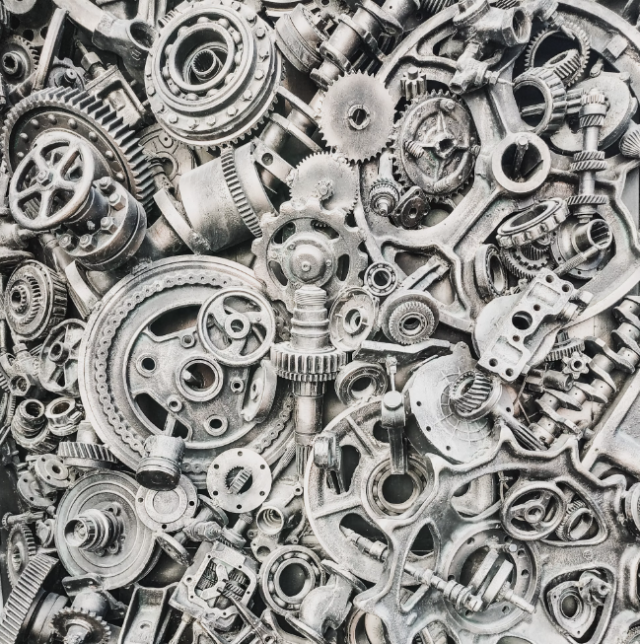
Have you ever wondered what drives the precision in the machines we rely on daily?
Meet the unsung hero of mechanical engineering – the ball screw. This ingenious device is the cornerstone of seamlessly and efficiently translating rotational motion into linear motion.
Imagine achieving unparalleled accuracy and efficiency in your mechanical applications, from aerospace to robotics, with a component that’s designed to deliver top-notch performance.
Dive into the world of ball screws with us and uncover five crucial facts that illuminate their importance, versatility, and the mechanics behind their operation. Let’s explore how this key component can revolutionize your understanding and use of mechanical systems.
What is a Ball Screw?
In the world of mechanical engineering, ball screws stand out as ingenious devices that facilitate precise and efficient linear motion. Let’s delve deeper into what makes them tick:
The Components
At its core, a ball screw comprises three main components:
- Screw (Spindle): This is the threaded shaft that serves as the primary mover.
- Nut: The nut houses the ball bearings and provides a track for their movement.
- Balls: These small, precision-engineered spheres roll between the screw and the nut, enabling smooth motion.
The Mechanics
Unlike traditional screw systems that rely on sliding friction, ball screws operate on rolling friction. This rolling motion between the balls and the threads results in significantly reduced friction, leading to higher efficiency and precision.
The Function
Ball screws convert rotational motion into linear motion with remarkable efficiency and accuracy. They find applications in various industries, including aerospace, automotive, robotics, and manufacturing, where precise positioning and smooth movement are paramount.
The Mechanics Behind the Magic
The secret to the ball screw’s efficiency lies in its rolling motion. The balls in the ball screw roll between the screw and the nut, significantly reducing friction compared to the sliding motion found in other systems. This rolling mechanism enables ball screws to have an efficiency of 90% or higher, making them ideal for applications requiring minimal energy loss and heat generation.
Precision and Load Capacity
When it comes to precision and load capacity, ball screws shine brightly, outperforming many other linear actuators. Let’s explore why they’re the go-to choice for applications requiring accuracy and strength:
High Precision
- Minimal Backlash: Ball screws exhibit minimal backlash, meaning there’s little to no play or slack in the system, ensuring precise positioning.
- Low Friction: With rolling friction between the balls and the threads, ball screws offer smooth and consistent motion, resulting in high accuracy.
- Repeatable Performance: The inherent design of ball screws ensures consistent performance over time, making them ideal for tasks demanding precision.
Impressive Load Capacity
- Robust Construction: Ball screws are engineered to withstand high loads without sacrificing performance or accuracy.
- Optimized Design: The combination of materials and design considerations allows ball screws to carry heavy loads while maintaining efficiency.
- Reliable Performance: Whether it’s in aerospace, automotive, or manufacturing, ball screws from schneeberger.com consistently deliver reliable performance under demanding conditions.
Longevity and Maintenance
With proper care and maintenance, ball screws can have an extended lifespan, offering a reliable solution for various applications. Regular lubrication is crucial to prevent wear and tear and to ensure the system operates smoothly. While ball screws are generally low maintenance, it’s important to monitor their condition and perform regular inspections to maintain their longevity.
Versatility Across Industries
The versatility of ball screws knows no bounds, as they find applications across a diverse array of industries. Let’s explore how these remarkable components contribute to various sectors:
Aerospace
- Flight Control Systems: Ball screws play a crucial role in adjusting flaps, ailerons, and other control surfaces with precision, ensuring safe and efficient flight.
- Landing Gear: They’re also used in retractable landing gear systems, providing reliable deployment and retraction during takeoff and landing.
Automotive
- Robotic Assembly: Ball screws enable precise movement in robotic arms, facilitating efficient assembly processes in automotive manufacturing plants.
- Electric Power Steering: In modern vehicles, ball screws are utilized in electric power steering systems to deliver responsive and accurate steering control.
Robotics
- Manipulation and Control: Ball screws form the backbone of robotic systems, allowing for precise positioning and movement in various applications, from pick-and-place operations to surgical robots.
- Motion Systems: They’re also integral components in robotic motion systems, providing smooth and accurate movement in multiple axes.
CNC Machinery
- Linear Motion Control: In CNC (Computer Numerical Control) machinery, ball screws are essential for translating digital commands into precise linear motion, ensuring accurate machining processes.
- Tool Positioning: They enable precise positioning of cutting tools and workpieces, resulting in high-quality and consistent machining outcomes.
Conclusion
Now that we’ve unveiled the pivotal role of ball screws in various industries, it’s clear they’re more than just a component; they’re a game-changer.
With their exceptional precision, efficiency, and versatility, ball screws stand out as a crucial element in the realm of mechanical engineering.
Imagine the potential advancements and innovations in your projects or industry with the integration of ball screws, enhancing performance and reliability.
Embrace the transformative power of ball screws in your mechanical applications and witness a significant leap in efficiency and precision.













